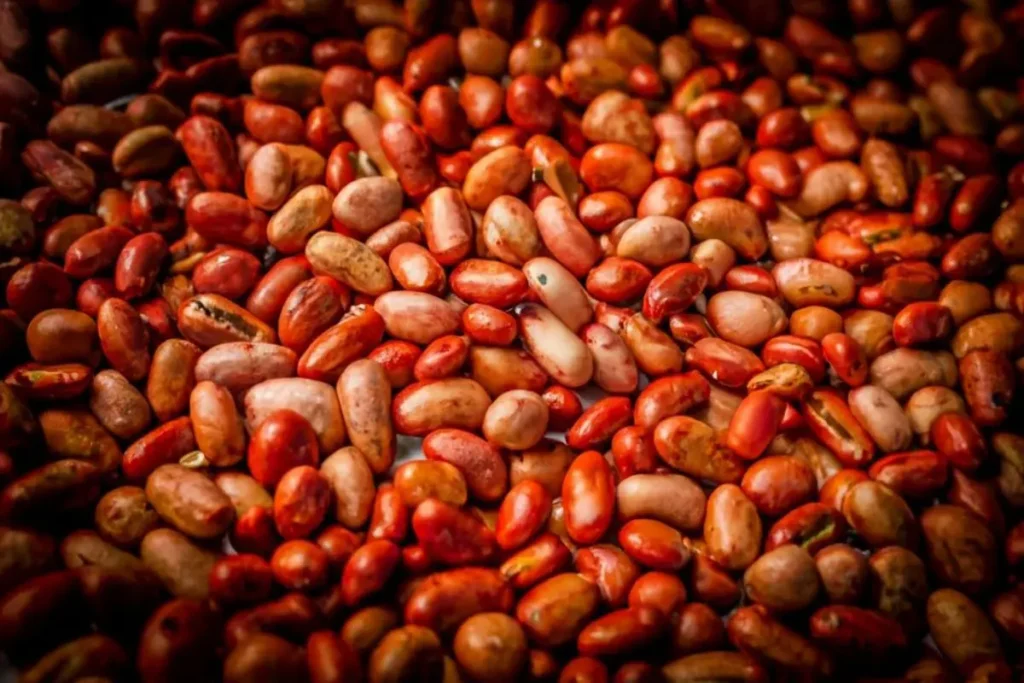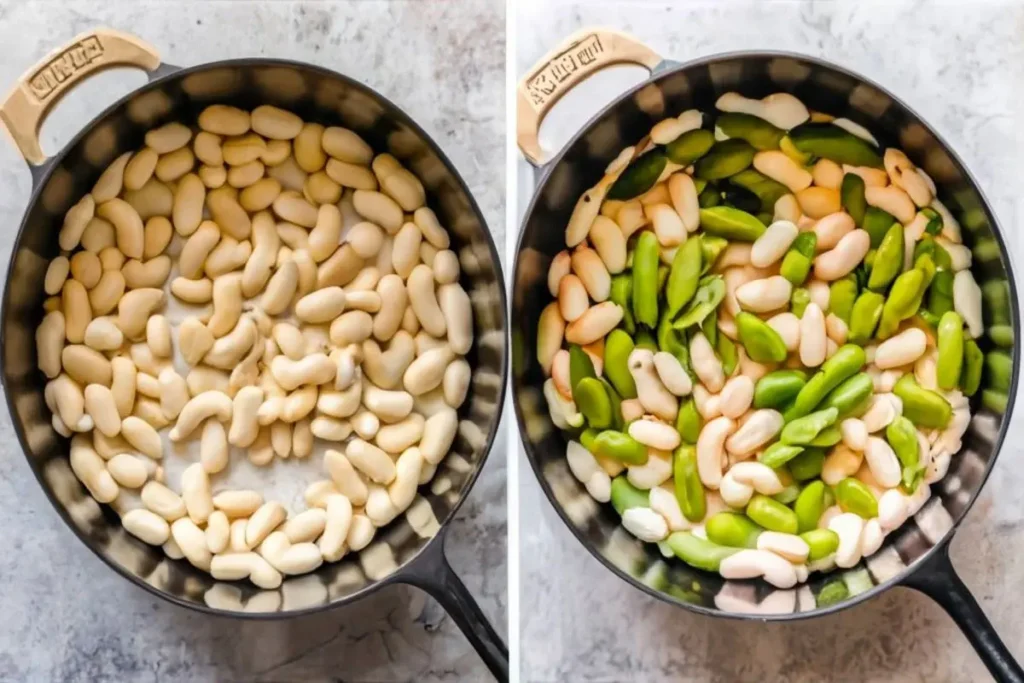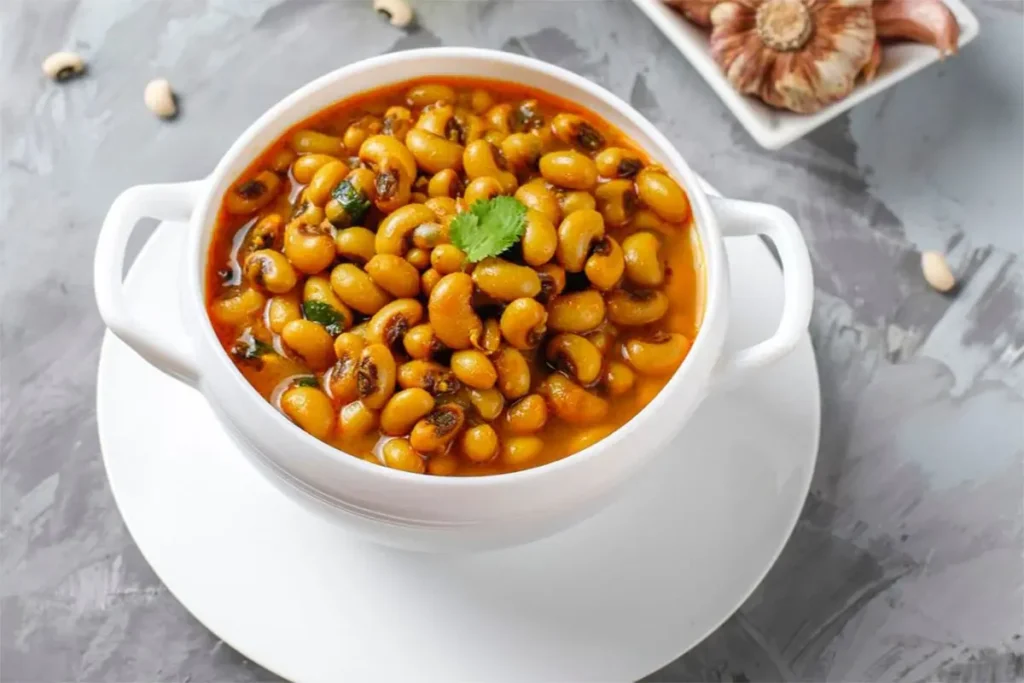In the realm of legumes, there’s a curious case that often stirs up a bit of confusion: the tale of butter beans and lima beans. Are they the same, or are they distinct entities in the world of beans? This article aims to unravel this mystery, delving deep into their nutritional profiles, culinary roles, and much more. So, let’s embark on this bean journey, shall we?
Understanding Butter Beans and Lima Beans
A Brief History
Butter beans and lima beans, often used interchangeably, have a rich and creamy history. Originating from different regions, these beans have become staples in various cuisines. The lima bean, named after Peru’s capital, has a South American heritage. In contrast, “butter bean” is a term more common in the Southern United States and parts of the UK.
These beans are not just tasty but also visually appealing. Younger, green-hued lima beans are tender, while mature ones are creamier, leading to the name “butter beans.” This change in taste and texture makes them versatile in cooking.
Their journey from simple legumes to culinary stars is remarkable. Whether in a Southern stew or a Peruvian dish, these beans have made their mark. But are they the same, or is there more to their story? The answer lies in their names and essence.
In the next section, we’ll explore their nutritional aspects. We’ll see why they’re good for both the soul and the body.
Nutritional Comparison of Butter Beans and Lima Beans
Dietary Fiber and Protein Content
Diving into the nutritional essence of butter beans and lima beans, we find a treasure trove of health benefits. “Both beans are stellar sources of dietary fiber, a crucial component for maintaining gut health and promoting a feeling of fullness. For a detailed breakdown of the nutritional content of lima beans, see this Healthline article. This fiber isn’t just a one-trick pony; it’s instrumental in regulating blood sugar levels and supporting heart health. In a world brimming with processed foods, these beans emerge as champions of natural, wholesome nutrition.
Protein is another feather in their cap. These beans are a fantastic source of plant-based protein, making them a favorite among vegetarians and vegans. The protein content in these beans supports muscle repair and growth, making them an excellent choice for those looking to maintain or build muscle mass.
Butter beans and lima beans also boast a low glycemic index, which means they release energy slowly, keeping you energized and satiated for longer periods. Healthline provides an in-depth look at how lima beans can stabilize blood sugar levels. This makes them an ideal food choice for people managing diabetes or those looking to maintain steady energy levels throughout the day.
Moreover, these beans are rich in essential vitamins and minerals. They’re a good source of iron, which is vital for transporting oxygen throughout the body, and magnesium, which plays a role in over 300 enzymatic reactions, including muscle and nerve function.
In summary, whether you’re reaching for butter beans or lima beans, you’re making a wise choice for your health. Their nutritional profile makes them a valuable addition to any diet, providing essential nutrients that support overall well-being.
In the next section, we’ll explore the culinary versatility of these beans, shedding light on their uses in various dishes and cuisines.
Culinary Uses of Lima Beans and Their Butter Bean Variants
Cooking and Preparation Methods
Butter beans and lima beans are not just nutritional powerhouses; they’re also culinary chameleons. Their versatility in the kitchen is remarkable, adapting to various cooking styles and flavors. Let’s delve into how these beans transform dishes with their unique textures and tastes.
Boiling is a common method to prepare these beans, softening them for a variety of dishes. But there’s more to these beans than just boiling. They can be baked, stewed, or even pureed. In Southern cuisine, butter beans often find their way into hearty stews, simmered with ham or bacon. This method brings out their creamy texture, making them a comfort food favorite.
Lima beans, on the other hand, are popular in salads and side dishes. Their firmer texture when lightly cooked adds a pleasant bite to these dishes. They’re also a staple in succotash, a traditional Native American dish. Here, they’re cooked with corn, creating a delightful blend of flavors and textures.
Popular Recipes and Dishes
Exploring the culinary world, we find butter beans and lima beans starring in a range of recipes. From the creamy butter bean soup to the refreshing lima bean salad, these beans are adaptable to both warm and cold dishes. Discover a variety of ways to prepare them in our butter beans recipe collection. They’re also a great meat substitute in vegetarian and vegan recipes, providing a satisfying, protein-rich alternative.
In Mediterranean cuisine, butter beans are often cooked with tomatoes, garlic, and herbs, For more ideas on what dishes butter beans are good in, explore our article on what are butter beans good in, creating a rich and flavorful dish. Lima beans find their way into Peruvian dishes, where they’re combined with rice, spices, and sometimes seafood.
Whether it’s a simple side dish or the main course, butter beans and lima beans bring a unique combination of nutrition and flavor to the table. Their ability to blend into various cuisines makes them a favorite among home cooks and professional chefs alike.
In the next section, we’ll explore the physical characteristics of these beans, understanding how their appearance, texture, and taste set them apart.
Exploring the Physical Characteristics and Health Benefits of Butter Beans and Lima Beans
Appearance, Texture, and Taste
The physical traits of butter beans and lima beans stand out as much as their roles in the kitchen. These differences shape not only their use in recipes but also the way bean lovers perceive and enjoy them.
Appearance: A quick look reveals size and color variations. Lima beans, usually smaller, display a greenish tint, especially when young and tender. Butter beans, typically larger, show off a creamy, pale hue that matches their name. This visual contrast significantly influences their selection for various dishes.
Texture: Here, the beans really differ. Young lima beans offer a softer, more delicate texture, perfect for salads and light meals. As they grow into butter beans, their texture turns creamier and richer. This creaminess makes butter beans ideal for hearty, comforting dishes, where they provide a satisfying feel.
Taste: Both beans share a mild, subtly buttery flavor. However, butter beans truly embody their name with a richer, more velvety taste. Often described as comforting and homey, they’re a culinary delight. Lima beans, though similar, offer a fresher, lighter flavor, fitting for dishes needing a more delicate bean taste.
Understanding these traits helps us choose the right bean for each dish. Whether it’s the gentle crunch of a lima bean in a summer salad or the lush creaminess of a butter bean in a winter stew, these beans bring varied and enjoyable culinary experiences.
Next, we’ll explore how different cultures and cuisines have embraced these beans, revealing their regional preferences.
Regional Preferences in Cooking with Butter Beans and Lima Beans
Geographical Popularity and Cultural Significance
Butter beans and lima beans boast diverse culinary uses and physical characteristics, along with distinct regional preferences that underscore their cultural significance. Various parts of the world embrace these beans in unique ways, reflecting each region’s culinary traditions.
In the Southern United States, butter beans reign as a staple. Cooks often prepare them slowly with ham or bacon, creating a rich, savory dish synonymous with comfort and Southern hospitality. This preference for butter beans in the South goes beyond culinary choice; it’s an integral part of the region’s cultural fabric, handed down through generations.
Conversely, lima beans enjoy broader appeal. They feature prominently in various cuisines, from traditional succotash in Native American cooking to Mediterranean dishes. In these cuisines, chefs often celebrate lima beans for their lighter, more delicate flavor and texture, making them a versatile ingredient in a wide array of dishes.
Traditional Dishes in Different Regions
Each region brings out the best in these beans in its own way. In Latin American countries, chefs commonly include lima beans in stews and soups, mixing them with corn, rice, and spices. This combination showcases their ability to absorb and complement bold flavors. In Mediterranean regions, cooks often pair them with olive oil, garlic, and lemon, emphasizing their lighter side.
The diverse ways chefs use these beans in different cuisines testify to their adaptability and the rich culinary traditions they represent. Whether it’s the hearty, creamy butter beans of the American South or the tender, versatile lima beans in dishes worldwide, these legumes have adapted and thrived in various culinary landscapes.
In the next section, we’ll explore the agricultural aspects of these beans, focusing on their farming and harvesting practices.
Agricultural Aspects
Farming and Harvesting Practices
Exploring the agricultural side of butter beans and lima beans reveals fascinating insights into their farming and harvesting practices. These practices not only affect the beans’ quality and flavor but also their availability and sustainability.
Farmers typically plant these beans in well-drained, fertile soil, ensuring they receive adequate sunlight and water. The growth cycle of these beans is quite interesting. Lima beans, for instance, require a warm climate to thrive, making them popular in regions with longer, warmer growing seasons. Butter beans, sharing similar growth requirements, also flourish under these conditions.
Harvesting these beans involves careful timing. Farmers pick lima beans when they are young and tender for a softer texture, ideal for salads and light dishes. For butter beans, they allow the beans to mature, developing a richer, creamier texture that’s perfect for heartier meals.
Seasonal Availability
The seasonal availability of these beans plays a crucial role in their culinary use. Fresh lima beans are typically available in the late summer and early fall, while butter beans, depending on the region, might have a slightly different harvest season. This seasonal rhythm influences how and when these beans appear in our meals, from fresh summer salads to comforting winter stews.
Understanding these agricultural aspects helps us appreciate the journey of these beans from farm to table. It also highlights the importance of sustainable farming practices in ensuring the continued availability and quality of these beloved legumes.
In the next section, we’ll address some common questions about butter beans and lima beans in our FAQ section.
FAQs: Health Benefits and Culinary Roles of Lima and Butter Beans
As we’ve explored the world of butter beans and lima beans, several questions often arise about these versatile legumes. Here, we address some of the most common inquiries to provide a deeper understanding and appreciation of these beans.
1. Are butter beans and lima beans the same? Yes, butter beans and lima beans are essentially the same. The main difference lies in their stage of maturity and regional naming preferences. Younger, green lima beans are tender, while mature butter beans are creamier and larger.
2. Can I substitute one for the other in recipes? Absolutely! Since they are the same bean at different maturity stages, you can substitute one for the other. However, consider the texture differences: lima beans are better for lighter dishes, while butter beans suit heartier meals.
3. What are the health benefits of these beans? Both beans are rich in dietary fiber, protein, and essential nutrients like iron and magnesium. They support digestive health, heart health, and are great for maintaining steady energy levels.
4. How should I store these beans? For dried beans, store them in a cool, dry place in an airtight container. If you’re wondering about the soaking process for butter beans, check out our guide on whether you need to soak butter beans before cooking. Cooked beans can be refrigerated for up to a week and can also be frozen for longer storage.
5. Are these beans easy to digest? Like many legumes, they can cause digestive discomfort for some people. Soaking and rinsing dried beans before cooking can help, as can gradually introducing them into your diet.
6. Can these beans be grown at home? Yes, you can grow them at home if you have a suitable climate. They need well-drained soil, plenty of sunlight, and a warm growing season.
Conclusion
In conclusion, the journey through the world of butter beans and lima beans reveals a story rich in nutritional value, culinary diversity, and cultural heritage. These beans, while often misunderstood, offer a versatile and healthful addition to various cuisines around the globe. Whether you’re savoring a hearty Southern dish or a light Mediterranean salad, butter beans and lima beans bring unique flavors and textures to your plate. Embracing these legumes in your cooking not only enhances your meals but also connects you to a tradition that spans continents and cultures.


